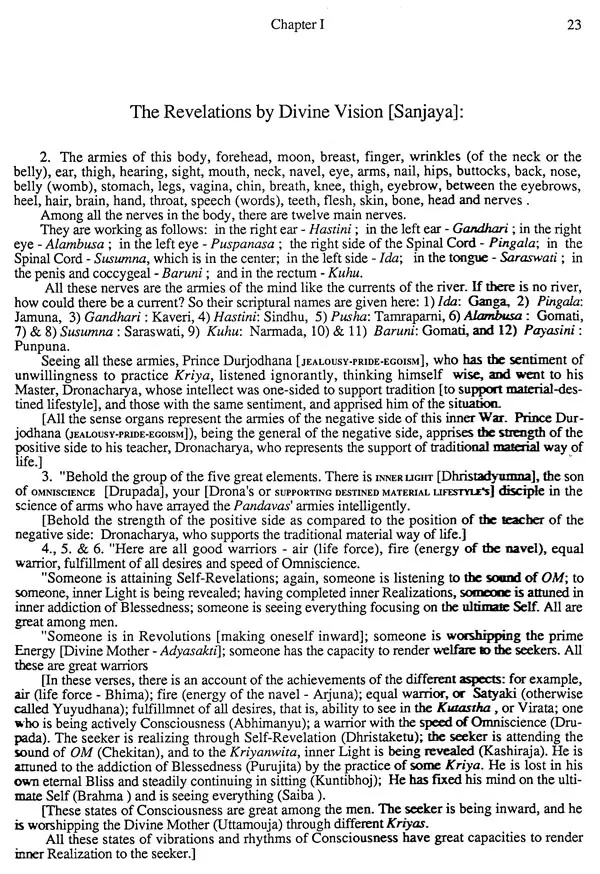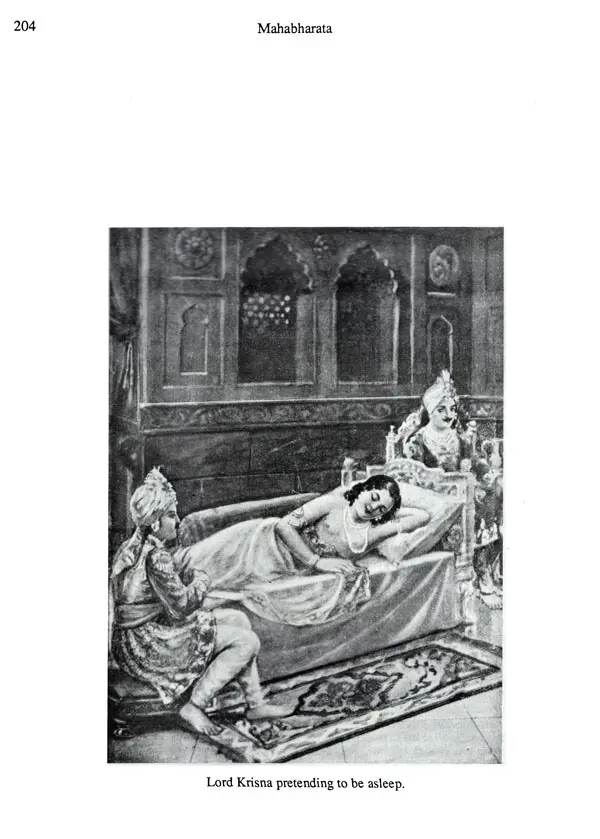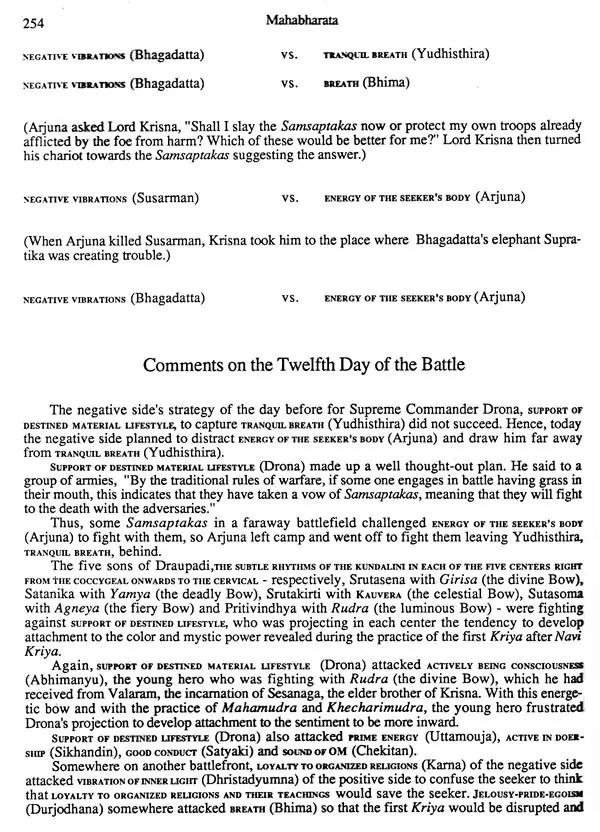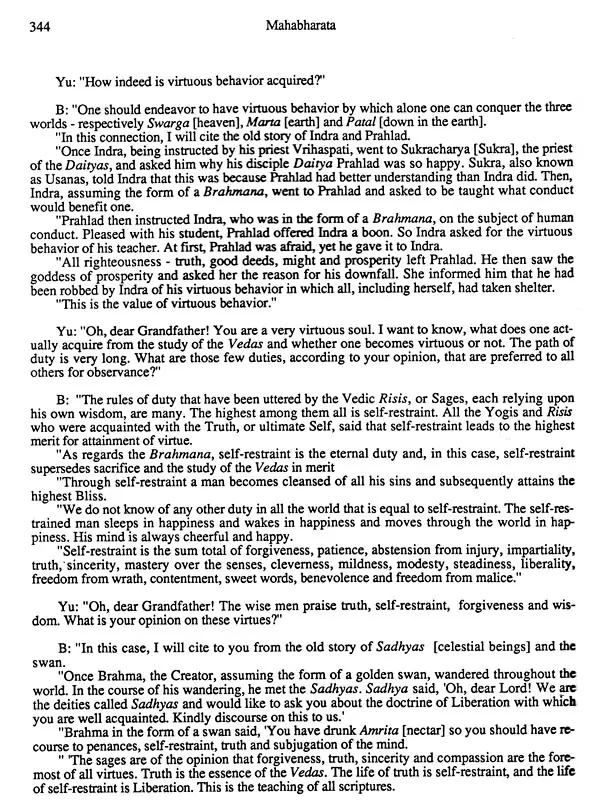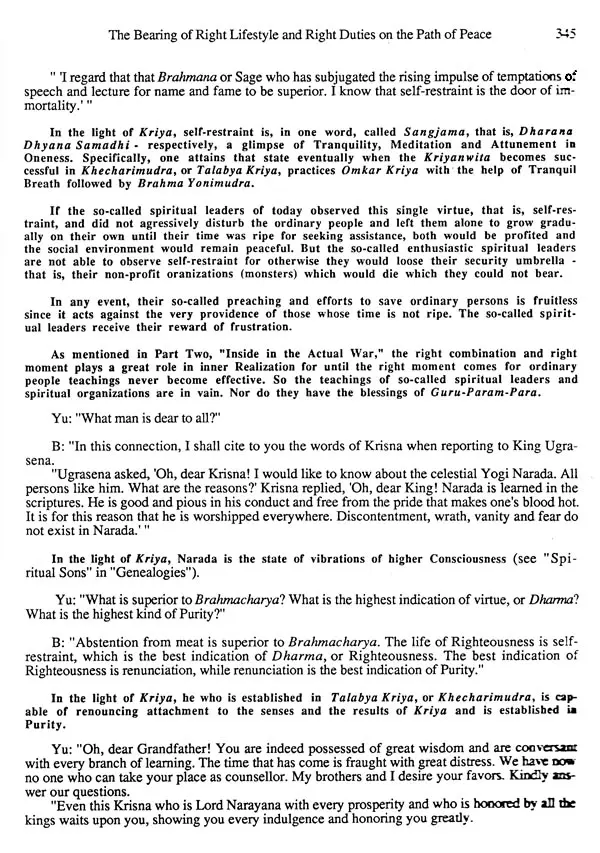
The Mahabharata With Lahiri Mahasay's Commentaries on The Bhagavad Gita By The Himalayan Yogi
Book Specification
| Item Code: | UAI734 |
| Author: | Swami Satyeswarananda Giri Maharaj |
| Publisher: | The Sanskrit Classics, Publisher |
| Language: | English |
| Edition: | 1986 |
| ISBN: | 1877854093 |
| Pages: | 417 (Throughout B/w Illustrations) |
| Cover: | PAPERBACK |
| Other Details | 11.00 X 8.00 inch |
| Weight | 920 gm |
Book Description
The Mahabharata is the longest epic ever known to mankind. It is the complete epic because, besides being a literary classic, it is a supreme treatise on yoga, philosophy, and the science of human be havior. It is an exhaustive manual of morals and manners.
The origin of the Mahabharata is shrouded in mystery. Count less scholars have tried to trace the personality of its author. Finally, Vedavyasa has been mentioned by many as its compiler. But doubts still persist on all these counts.
Was it possible for one man to compose over a hundred thousand verses? Handed down by oral tradition, was the Maha bharata finally written down in 800 B.C., or 2000 B.C.? There is no conclusive answer.
The core of the epic consists of a quarrel between the princely cousins, called the Pandavas and Kauravas, leading a eighteen-days' long bloody war and must have had its roots in some real happening.
However, the uniqueness is the universality of its message in the light of Kriya, which relates to everybody's daily life irrespec tive of religious beliefs. Thus, it continues to maintain its prestige as Siddha Kavya, "the Epic superior to the great epics" and also as the scripture of eternal message. The text with its available recensions points to three oral versions: The first as recited by Vedavyasa himself, the next as recited by his disciple Vaisampayana to Janmenjaya, and the third as narrated again by Sage Sauti, who had heard Vaisampayana's narrated again by Sage Sauti, who had heard Vaisampayana's recital.
Additions and interpolations must have crept in at various times, till the advent of the printing-press and the standard editions. So there are variations in references in some places in different versions.
In the West, a tendency has been developed by some vested interest groups to sponsor some Indian Yogis and slowly influence them to agree with the group's interest in starting non-profit organi zations and foundations. This trend began to rise in the twenties and fully matured in the sixties. These groups started commercially oriented retreats and communities to profit and enhance their security umbrella. Such things may be legal, but in the spiritual perspective they are the negative temptation of those spiritual organizations and publishing companies who water down the original, authentic message of ancient vedic Wisdom in the name of making it more effective, practical and popular. In fact, they want to accommodate their weaknesses. It seems they have lost respect and regard for the eternal character of a message which does not leave any room for changes and alterations. That is why The Sanskrit Classics is dedicated to present the original, authentic information of the eternal message of vedic Culture.



